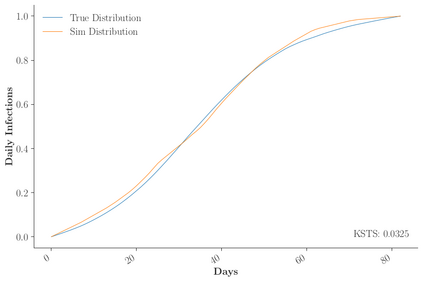Parameter calibration is a significant challenge in agent-based modelling and simulation (ABMS). An agent-based model's (ABM) complexity grows as the number of parameters required to be calibrated increases. This parameter expansion leads to the ABMS equivalent of the \say{curse of dimensionality}. In particular, infeasible computational requirements searching an infinite parameter space. We propose a more comprehensive and adaptive ABMS Framework that can effectively swap out parameterisation strategies and surrogate models to parameterise an infectious disease ABM. This framework allows us to evaluate different strategy-surrogate combinations' performance in accuracy and efficiency (speedup). We show that we achieve better than parity in accuracy across the surrogate assisted sampling strategies and the baselines. Also, we identify that the Metric Stochastic Response Surface strategy combined with the Support Vector Machine surrogate is the best overall in getting closest to the true synthetic parameters. Also, we show that DYnamic COOrdindate Search Using Response Surface Models with XGBoost as a surrogate attains in combination the highest probability of approximating a cumulative synthetic daily infection data distribution and achieves the most significant speedup with regards to our analysis. Lastly, we show in a real-world setting that DYCORS XGBoost and MSRS SVM can approximate the real world cumulative daily infection distribution with $97.12$\% and $96.75$\% similarity respectively.
翻译:以物剂为基础的建模和模拟(ABMS)是一个重大挑战。一种以物剂为基础的模型(ABM)复杂程度随着需要校准的参数数量的增加而增加。这个参数的扩大导致ABRSS的精确性相当于\say{维度的临界值}。特别是,寻找一个无限参数空间的不可行的计算要求。我们提出了一个更加全面和适应性的反弹道导弹系统框架,可以有效地转换参数化战略和代用模型,以参数化一种传染病“反导”。这个框架使我们能够评估不同战略-Surgate组合在准确性和效率(加速)方面的性能。我们表明,我们比代孕辅助取样战略和基线的准确性要好得多。此外,我们确定,与支持性消毒器机器的代用模型相结合,在总体上最接近于精确的参数的参数上,我们用XGBoost来进行Dynacredate搜索。









